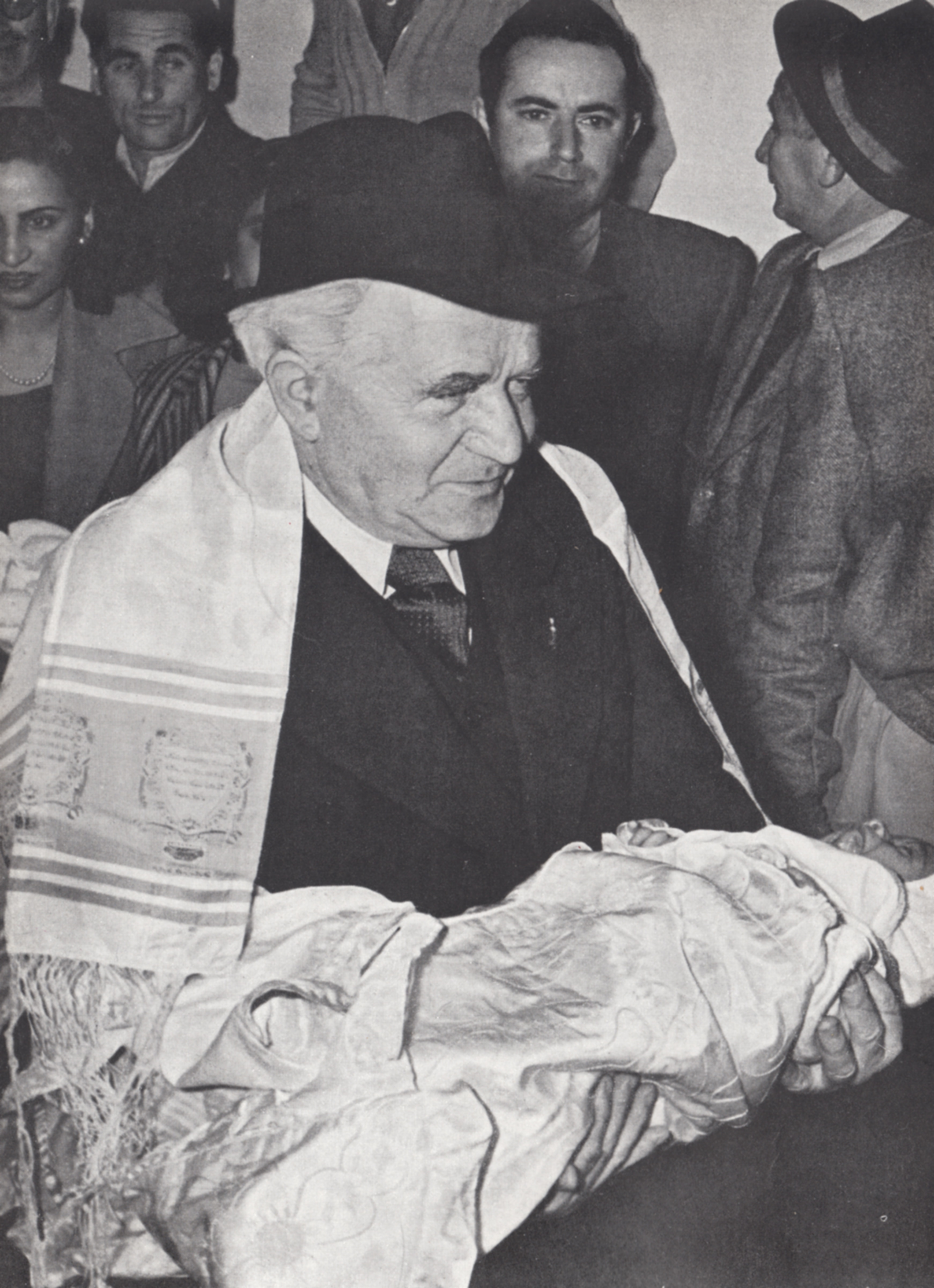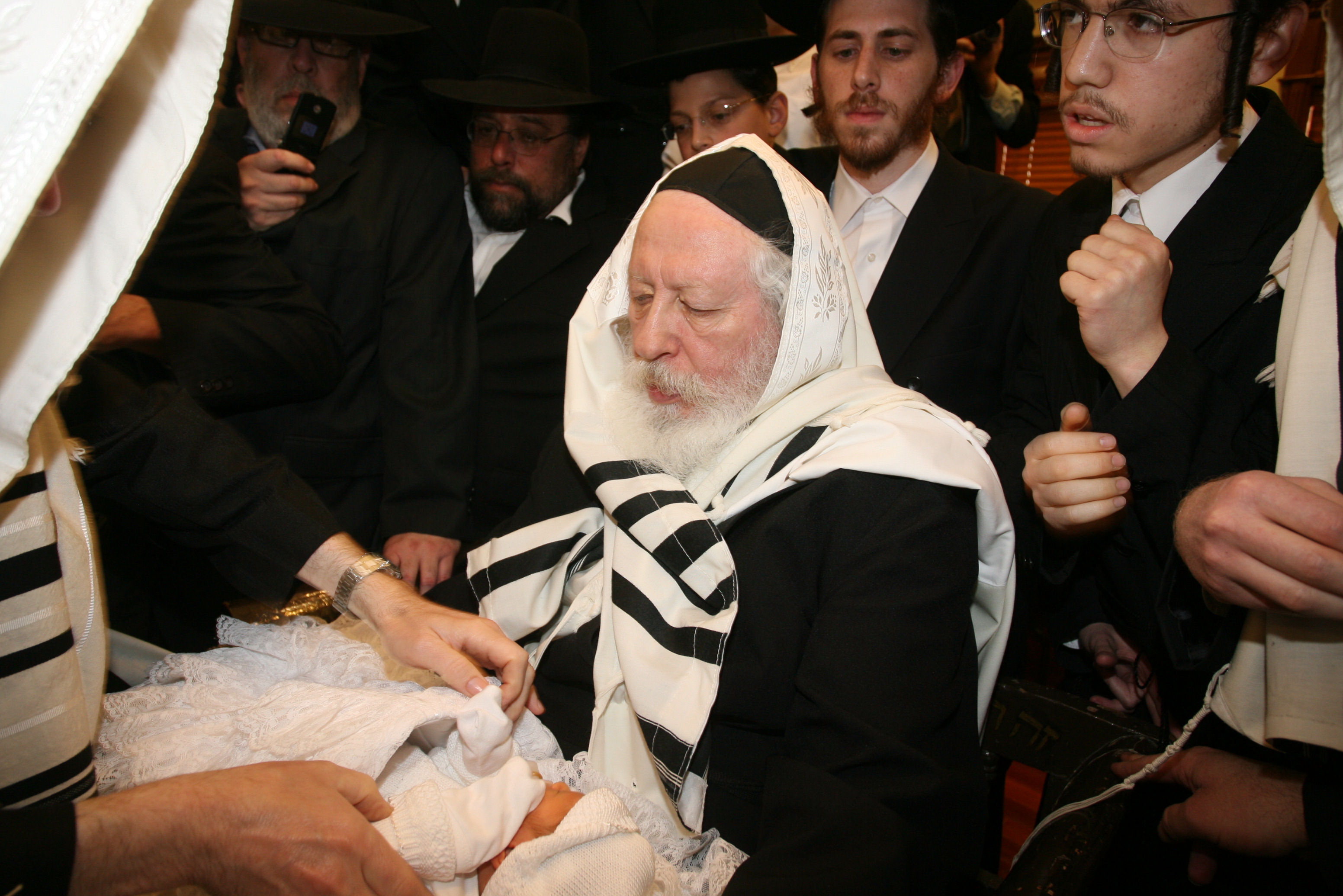Sandek on:
[Wikipedia]
[Google]
[Amazon]


 A sandek or sandak ( he, סנדק "companion of child") is a person honored at a
A sandek or sandak ( he, סנדק "companion of child") is a person honored at a
/ref> In Modern Hebrew, ''sandak'' is also the word for godfather; the film


 A sandek or sandak ( he, סנדק "companion of child") is a person honored at a
A sandek or sandak ( he, סנדק "companion of child") is a person honored at a Jewish
Jews ( he, יְהוּדִים, , ) or Jewish people are an ethnoreligious group and nation originating from the Israelites Israelite origins and kingdom: "The first act in the long drama of Jewish history is the age of the Israelites""The ...
''brit milah
The ''brit milah'' ( he, בְּרִית מִילָה ''bərīṯ mīlā'', ; Ashkenazi pronunciation: , " covenant of circumcision"; Yiddish pronunciation: ''bris'' ) is the ceremony of circumcision in Judaism. According to the Book of Genes ...
'' (circumcision
Circumcision is a procedure that removes the foreskin from the human penis. In the most common form of the operation, the foreskin is extended with forceps, then a circumcision device may be placed, after which the foreskin is excised. Top ...
) ceremony, traditionally either by holding the baby boy on the knee
In humans and other primates, the knee joins the thigh with the leg and consists of two joints: one between the femur and tibia (tibiofemoral joint), and one between the femur and patella (patellofemoral joint). It is the largest joint in the ...
s or thigh
In human anatomy, the thigh is the area between the hip ( pelvis) and the knee. Anatomically, it is part of the lower limb.
The single bone in the thigh is called the femur. This bone is very thick and strong (due to the high proportion of ...
s while the mohel performs the brit milah, or by handing the baby to the mohel.Kogen, Fred R. "Defining Sandek." ''The Bris Mila''/ref> In Modern Hebrew, ''sandak'' is also the word for godfather; the film
The Godfather
''The Godfather'' is a 1972 American crime film directed by Francis Ford Coppola, who co-wrote the screenplay with Mario Puzo, based on Puzo's best-selling 1969 novel of the same title. The film stars Marlon Brando, Al Pacino, James Caa ...
is known in Hebrew as ''HaSandak''.
Etymology
The origin of the term has been attributed to a derivation from the Greek ''sunteknos'' (''syn-'', meaning "plus", and ''tekno'', meaning "child"), which means "companion of child". Alternatively, it may be derived from Greek σύνδικος (Latin, "syndicus"), in the sense of "representative," "patron," "advocate."History
A number of references inmidrashim
''Midrash'' (;"midrash"
''Random House Webster's Unabridged Dictionary''. he, מִדְרָשׁ; ...
and other early rabbinical works testify to the existence of the sandek in the Talmudic age. In medieval rabbinical literature the references to the office are numerous, and it appears to have been well established and highly esteemed. Thus the "Haggahot Maimuniyyot" mentions that many "covet and eagerly desire to hold the child upon their knees as it is circumcised."
In medieval times the ''sandek'' was known by many other names as well, including "ba'al berit" (master of the covenant), "ba'al berit ha-milah" (master of the covenant of circumcision), "tofes ha-yeled" (holder of the child), "av sheni" (second father), and "shaliach" (messenger). The office was surrounded with marks of honor. A special seat, usually richly decorated, was prepared in the synagogue for the sandik, and if the circumcision happened on a day of ''Random House Webster's Unabridged Dictionary''. he, מִדְרָשׁ; ...
Torah reading
Torah reading (; ') is a Jewish religious tradition that involves the public reading of a set of passages from a Torah scroll. The term often refers to the entire ceremony of removing the scroll (or scrolls) from the Torah ark, chanting th ...
, he was entitled to receive an aliyah
Aliyah (, ; he, עֲלִיָּה ''ʿălīyyā'', ) is the immigration of Jews from the diaspora to, historically, the geographical Land of Israel, which is in the modern era chiefly represented by the State of Israel. Traditionally descri ...
. The privilege was reserved for persons of standing and of good moral and religious character. It was restricted also in other ways. Rabbinical authorities (for instance, Rabbenu Peretz and Judah the Hasid) decreed that the privilege should not be given more than once to the same man in the same family, neither should it, unless unavoidable, be given to women. This latter prohibition was based on motives of delicacy. Women were, however, permitted to participate indirectly in the privilege as associates to the sandek. They carried the child to the entrance of the synagogue or to the room in which the circumcision was about to take place, where it was taken by the sandek.
Customs

Rabbi
A rabbi () is a spiritual leader or religious teacher in Judaism. One becomes a rabbi by being ordained by another rabbi – known as '' semikha'' – following a course of study of Jewish history and texts such as the Talmud. The basic form o ...
Moses Isserles
). He is not to be confused with Meir Abulafia, known as "Ramah" ( he, רמ״ה, italic=no, links=no), nor with Menahem Azariah da Fano, known as "Rema MiPano" ( he, רמ״ע מפאנו, italic=no, links=no).
Rabbi Moses Isserles ( he, משה � ...
(the Rema) recorded the practice of the sandek holding the baby on his thighs. The Vilna Gaon
Elijah ben Solomon Zalman, ( he , ר' אליהו בן שלמה זלמן ''Rabbi Eliyahu ben Shlomo Zalman'') known as the Vilna Gaon (Yiddish: דער װילנער גאון ''Der Vilner Gaon'', pl, Gaon z Wilna, lt, Vilniaus Gaonas) or Elijah of ...
cites Midrash Tehillim
Midrash Tehillim (Hebrew: מדרש תהלים), also known as Midrash Shocher Tov or the Midrash to Psalms, is an aggadic midrash to the Psalms.
It has been known since the 11th century, when it was quoted by Nathan of Rome, by R. Isaac ben Juda ...
, explaining that this is based on , which states, "All my bones shall say: 'YHWH
The Tetragrammaton (; ), or Tetragram, is the four-letter Hebrew theonym (transliterated as YHWH), the name of God in the Hebrew Bible. The four letters, written and read from right to left (in Hebrew), are ''yodh'', '' he'', '' waw'', and ...
, who is like you?'"; the midrash
''Midrash'' (;"midrash"
''Random House Webster's Unabridged Dictionary''. he, מִדְרָשׁ; ...
outlines how every body part is used in the service of God, and says that the sandek's thighs participate in the service of God by placing the baby on them during the brit.
The Rema records a custom that a father should not honor the same individual twice with being the sandek for his children. The reason is that the sandek is compared to a ''''Random House Webster's Unabridged Dictionary''. he, מִדְרָשׁ; ...
kohen
Kohen ( he, , ''kōhēn'', , "priest", pl. , ''kōhănīm'', , "priests") is the Hebrew word for " priest", used in reference to the Aaronic priesthood, also called Aaronites or Aaronides. Levitical priests or ''kohanim'' are traditionally ...
'' (priest) offering the incense offering
The incense offering ( he, ) in Judaism was related to perfumed offerings on the altar of incense in the time of the Tabernacle and the First and Second Temple period, and was an important component of priestly liturgy in the Temple in Jerus ...
in the Jewish Temple. The procedure regarding the incense is that a kohen does not perform this ''mitzva
In its primary meaning, the Hebrew word (; he, מִצְוָה, ''mīṣvā'' , plural ''mīṣvōt'' ; "commandment") refers to a commandment commanded by God to be performed as a religious duty. Jewish law () in large part consists of discus ...
'' more than once in his lifetime: as God is presumed to reward with wealth the kohen who offers the incense, as many kohanim as possible are given the opportunity to become wealthy. Similarly, the opportunity is afforded to as many people as possible to serve as a sandek and receive God's blessing to become wealthy.
The Vilna Gaon
Elijah ben Solomon Zalman, ( he , ר' אליהו בן שלמה זלמן ''Rabbi Eliyahu ben Shlomo Zalman'') known as the Vilna Gaon (Yiddish: דער װילנער גאון ''Der Vilner Gaon'', pl, Gaon z Wilna, lt, Vilniaus Gaonas) or Elijah of ...
expresses some skepticism regarding this custom. First, based on its reasoning, the custom should have been that one should not serve more than once as a sandek for any child, not just two different children of one family. Second, the Vilna Gaon writes that no one has become wealthy because he served as a sandek. Nevertheless, the Aruch Hashulchan concludes that the custom recorded by the Rema should be observed. The Aruch Hashulchan notes, though, that the custom in many locales is that the ''rav
''Rav'' (or ''Rab,'' Modern Hebrew: ) is the Hebrew generic term for a person who teaches Torah; a Jewish spiritual guide; or a rabbi. For example, Pirkei Avot (1:6) states that:
The term ''rav'' is also Hebrew for ''rabbi''. (For a more nuan ...
'' (rabbi) of the city serves as the sandek for all the baby boys. The Aruch Hashulchan justifies this practice by comparing the local rav to the ''kohen gadol
High Priest ( he, כהן גדול, translit=Kohen Gadol or ; ) was the title of the chief religious official of Judaism from the early post- Exilic times until the destruction of the Second Temple in Jerusalem by the Romans in 70 CE. Previou ...
'' (high priest), who had the right to offer a ''korban
In Judaism, the korban ( ''qorbān''), also spelled ''qorban'' or ''corban'', is any of a variety of sacrificial offerings described and commanded in the Torah. The plural form is korbanot, korbanoth or korbans.
The term Korban primarily re ...
'' (sacrifice) or incense any time he desired. Indeed, it is related that the Chazon Ish served as the sandek for innumerable baby boys. Rabbi Yissocher Frand relates that Rav Yaakov Yitzchak Ruderman (the ''rosh yeshiva
Rosh yeshiva ( he, ראש ישיבה, pl. he, ראשי ישיבה, '; Anglicized pl. ''rosh yeshivas'') is the title given to the dean of a yeshiva, a Jewish educational institution that focuses on the study of traditional religious texts, primar ...
'' (dean) of Yeshivat Ner Yisrael) also served as the sandek for countless baby boys.
The honor was given traditionally to one Jewish male: some older family member (grandfather, great-grandfather), a rabbi, or another important male who was observant and righteous. The sandek also wore the ''tallit
A tallit ''talit'' in Modern Hebrew; ''tālēt'' in Sephardic Hebrew and Ladino; ''tallis'' in Ashkenazic Hebrew and Yiddish. Mish. pl. טליות ''telayot''; Heb. pl. טליתות ''tallitot'' , Yidd. pl. טליתים ''talleisim''. is a f ...
'' (prayer shawl) and held the baby on a pillow while the mohel completed the circumcision. In modern times, among some more liberal Jews, the sandek may be female, or even non-Jewish. At most ceremonies, there is only a single sandek, but two are permissible, although more than two is uncommon.
During the brit, a chair is sometimes placed next to the sandek's seat. The chair is reserved for the prophet
In religion, a prophet or prophetess is an individual who is regarded as being in contact with a divine being and is said to speak on behalf of that being, serving as an intermediary with humanity by delivering messages or teachings from the ...
Elijah, and remains unoccupied during the ceremony; this practice is derived from the tradition that Elijah protects children from danger. According to some sources, the sandek is the "representative" of Elijah.Shoulson, Joel. "Orientation." .
References
{{JewishEncyclopedia, url=http://www.jewishencyclopedia.com/articles/13174-sandek-syndikus, title=GODFATHER Birth in Judaism